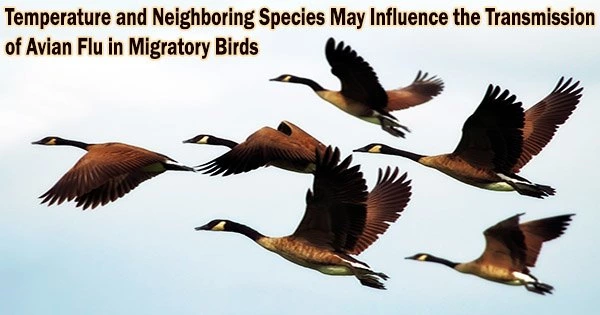The avian flu outbreaks on farms this Christmas season may make it challenging to find a turkey. The virus may have been introduced to commercial flocks by migratory wild birds, but until now no one has closely examined this traveling population.
The circulation of H7 and H9 strains may be boosted by cooler temperatures and certain species congregating in the same winter habitat, according to research published in the ACS journal Environmental Science & Technology.
At numerous chicken farms and live markets, where significant outbreaks are predicted to occur, avian flu is now being monitored in the air. However, migratory birds infected with H5, H7, or H9 viruses have been connected to many of the deadliest outbreaks. Even if there are infected individuals, the spread-out populations of these wild birds make it difficult to assess virus levels in the air since the levels are so low.
The greatest ecological settings and habitats for feeding, mating, and raising their young can be found by migratory birds over distances of hundreds or even thousands of kilometers. When breeding places experience unfavorable conditions, it is time to migrate to areas with better weather.
Migration is a tremendous endurance test that demands enormous strength and stamina. However, modern human activity poses new dangers to birds. A stopover location may have been damaged by farming or urbanization when hungry, weary birds come there. Millions of birds are unlawfully murdered by hunters each year, or they clash with man-made objects like powerlines. And climate change is causing habitats to shift or disappear.
Pei-Shih Chen and associates previously figured out way to assess tiny concentrations of airborne avian flu virus RNA in the environment. With the help of this technique, Chen, Chen-Chih Chen, and a fresh group of researchers sought to gather the first data of its kind on virus strains that are probably present among migratory birds at a winter habitat and determine what variables might be affecting the risks of transmission within the wild flock.
For two years, the scientists routinely collected air samples in east Asia close to a sizable wetland and processed the samples through extremely small membranes. The filters’ viral RNA was isolated, amplified, and subjected to quantitative real-time polymerase chain reaction analysis for influenza strains A, H5, H7, and H9. The team then matched the findings to weather information and a log of the different bird species that were present during the migration season.
Higher airborne concentrations of influenza A, H7, and H9 have been associated with lower daily temperatures.
Additionally, it was shown that some migratory bird species, such as those belonging to the Anseriformes, Charadriiformes, and Pelecaniformes orders, were present during times when the number of H7 and H9 virus copies was very high.
Migration is a dangerous voyage that entails many risks, many of which are brought on by human activity. In addition, the challenges facing birds are as varied as the people and their customs in many nations. The loss of wintering and stopping sites could significantly affect the odds of survival for migrating birds because they rely on a variety of locations along their distribution area.
The researchers claim they have discovered potential factors that affect the strains of the disease circulating in the winter among migratory birds by proving that ambient air sampling can detect airborne avian flu.
The authors acknowledge funding from the Research Center for Precision Environmental Medicine, Kaohsiung Medical University, Kaohsiung, Taiwan from The Featured Areas Research Center Program within the Higher Education Sprout Project by the Ministry of Education in Taiwan; Kaohsiung Medical University Research Center Grants; the Council of Agriculture, Executive Yuan, Republic of China; Taiwan’s Ministry of Science and Technology, Republic of China; and the NPUST-KMU joint research project.
















